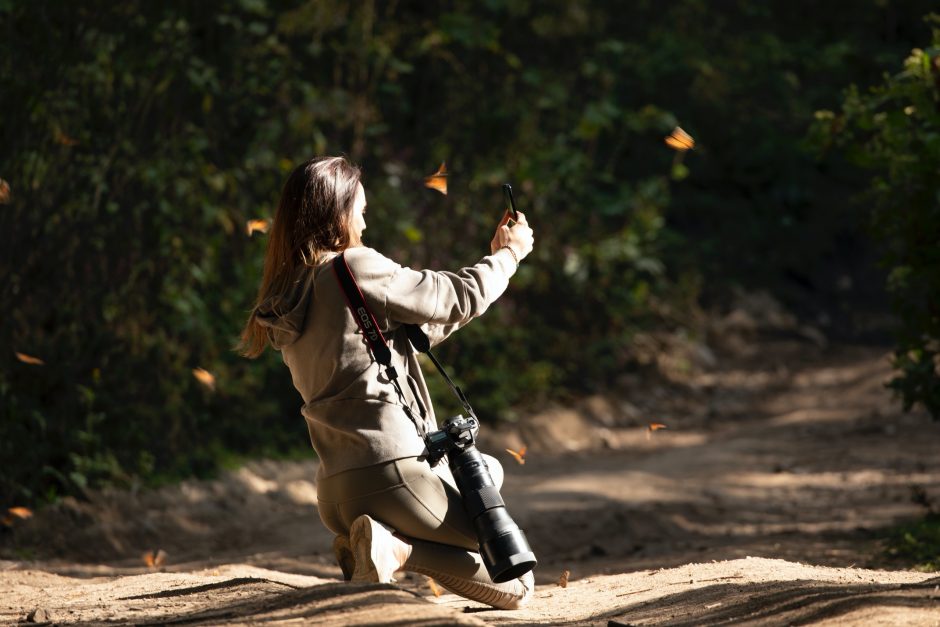
Monarch Migration in Action
Another incredible monarch migration seasons draws to a close and I’m still in awe of the marvels I witnessed from me recent monarch photo adventures. Each time I immerse myself in the culture, landscapes, and butterflies of central Mexico I fall in love more and more with the very essence of the migration and this amazing adventure we run.
As I sort through my photos, carefully selecting those I find more special, intriguing, and representative of the migration, I thought perhaps it would be nice to share a few here in a photo essay of sorts. For each photo, I will share a few thoughts about how this was captured, along with a few tips and tricks that allowed for the photo.
It’s my hope that by viewing this photos, and perhaps learning a bit about my experiences, you will join me on one of these spectacular monarch butterfly adventures one day and take home your own sensational photos of this truly unique phenomenon. Let’s go!
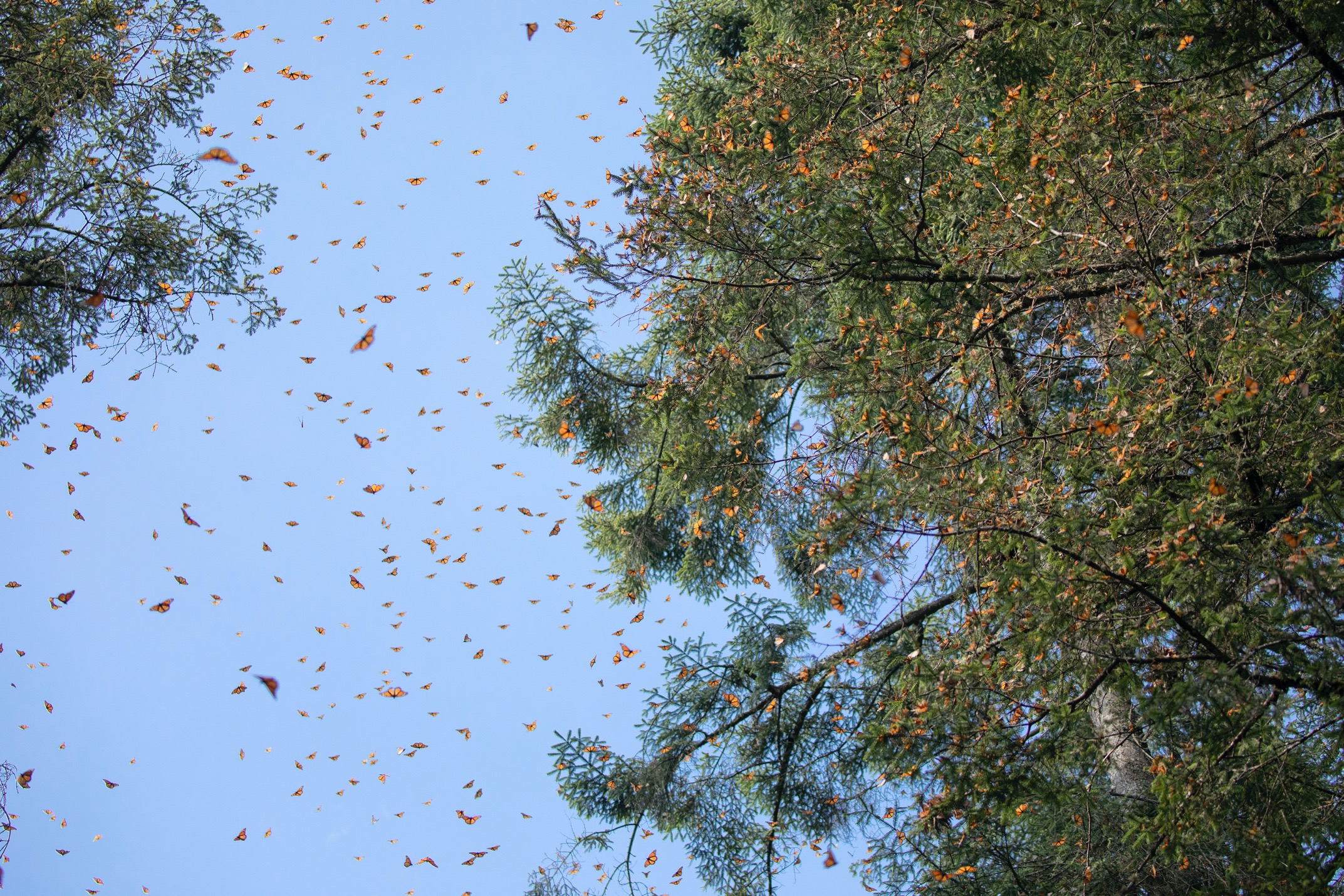
Starting with one of the quintessential scenes of the monarch biosphere reserves, thousands of monarchs burst into the air at mid-day as temperatures warm. The trick to getting this shot is to be ready with a very fast shutter speed (1/1600 of a second) and a wide angle lens (24mm).
Picking out a focus point is achieved by focusing on a part of the tree where the monarchs are flying. There is just no way to focus on a single monarch, so use a “representative” focus area that allows you to get an average focus in the “middle” of where the butterflies are flying.
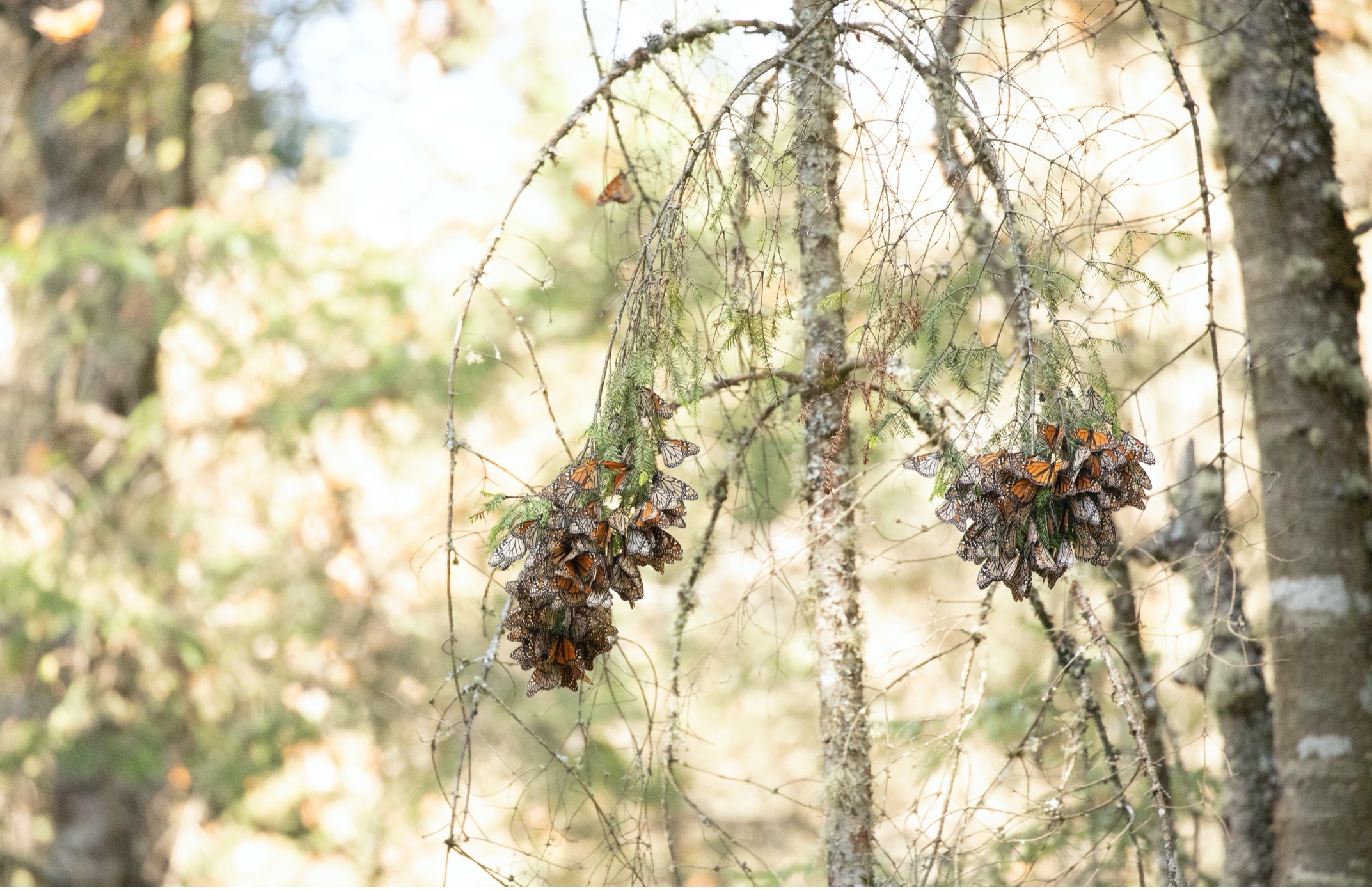
Monarchs cluster in the trees in all shapes and sizes…some clusters are large and house thousands of butterflies, while some are “just” dozens of butterflies huddled together.
Lighting in the colonies can be tricky, so using exposure compensation is a must. Oftentimes I am purposefully darkening my photos to allow small highlights to be more properly lit. Here, though, we have the opposite case where the clusters were in complete shade with a moderately sunlit background. By overexposing my photo, the clusters of monarchs turned out rather evenly lit, while the background shines bright. It’s approaching “overexposure” but it yields an interesting, artistic scene.
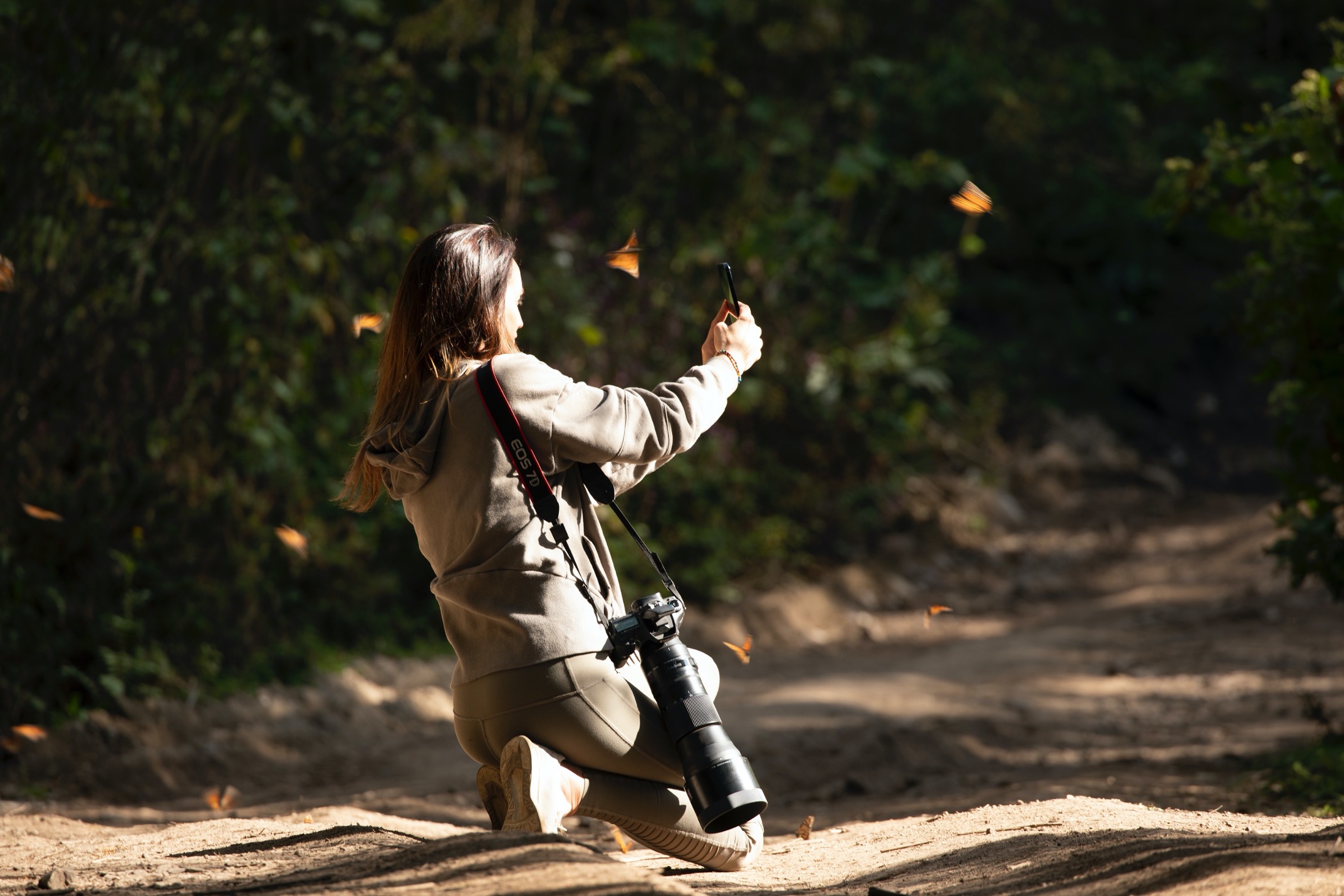
This photo turned out on accident. While I spotted one of my photographers down the trail, encircled by monarchs, I did not intend on the slow shutter. This just happened to be on my camera from a previous photo. What it did yield, though, is a neat shot where the subject is in crisp focus (because she was holding very still!), and the butterflies flying around her are blurred. Motion blur, whether intentional or not, can often yield a unique photo that captures some movement in an otherwise 2D still photo.

Much of the monarch butterfly story is about people…the local community, park rangers, and our own human-fueled passion for these remarkable butterflies. I am always looking for people hiking down forest paths, and hoping for a few monarchs to be in the scene. Here, two of the local community members are captured perfectly as they take a walk in the woods.
Photographing people as they behave naturally is best achieved by using a “burst mode” on your camera, so that you take several photos and can choose the exact moment that was captured best (like just as their feet leave the ground for the next step, showing motion and portraying their behavior best).

Because monarchs are usually found high in the trees, a bottom up photo often results in silouhetting. This can be embraced and even exaggerated by finding patterns and placing the monarch clusters against the brilliant blue sky.
I often will say “choose your background” when taking photos. Moving slightly left or right positions these tree-dwelling butterflies at different points against the blue sky.
As a bonus, take the photo on f/11 or f/22 to achieve that sunburst effect.
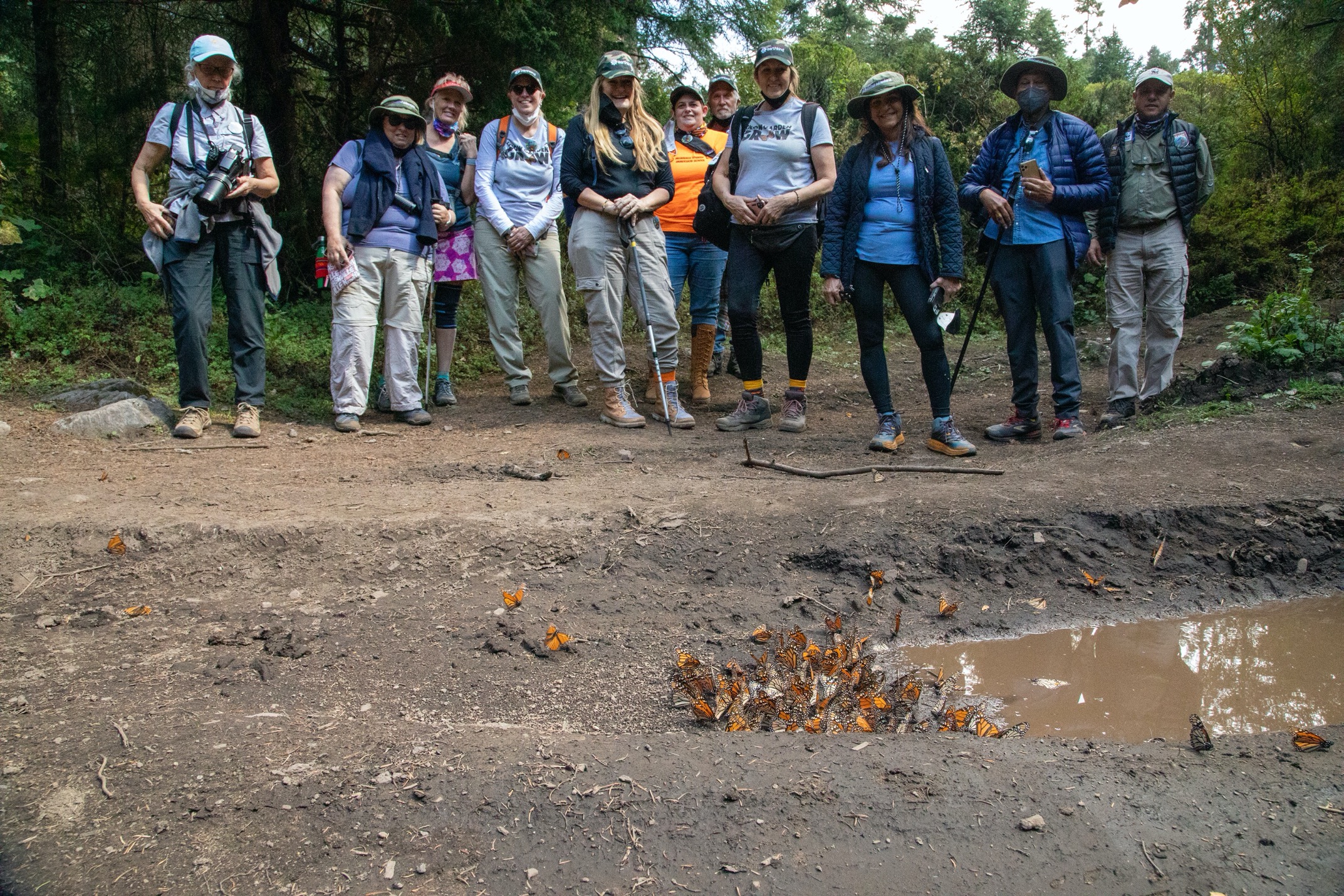
Although I use a telephoto lens for monarch photography most of the time, a good wide angle or ultra-wide angle photo is really quite important. Here, a few dozen monarchs “puddle” at some mud to acquire moisture and minerals, while my eager group of travelers looks on. An epic group photo!
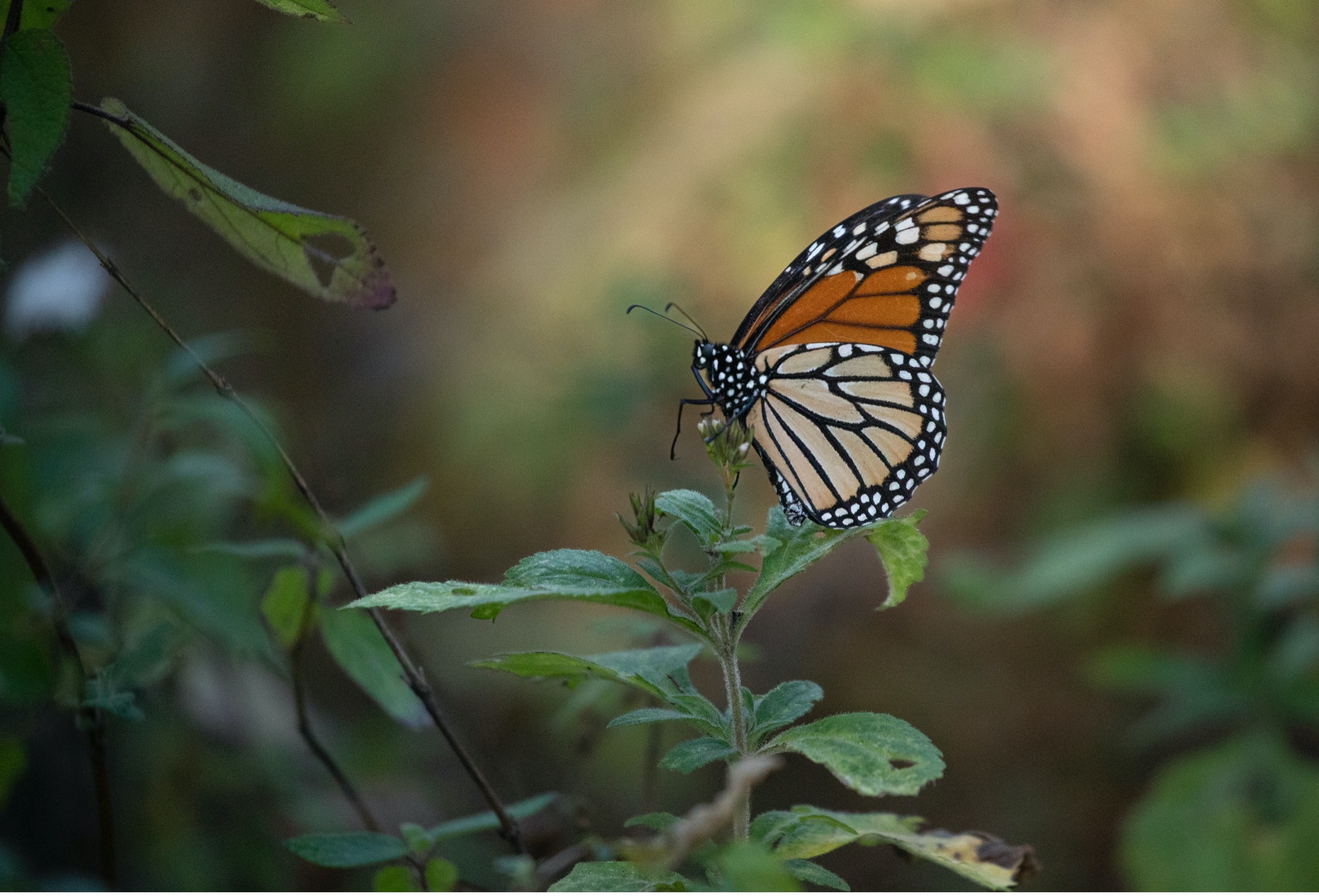
Although the monarch migration often conjures up the millions of butterflies involved, the opportunity for macro photography of individual butterflies is stupendous. No matter where you look, there is a spectacular monarch butterfly nearby that is ready to pose for you.
Once again, you can “choose your background” of this photo by moving to your left or right slightly. Here, the background is a distance away, which allows for that pleasing background blur to take effect, which helps isolate the butterfly from its surroundings and minimize distraction.
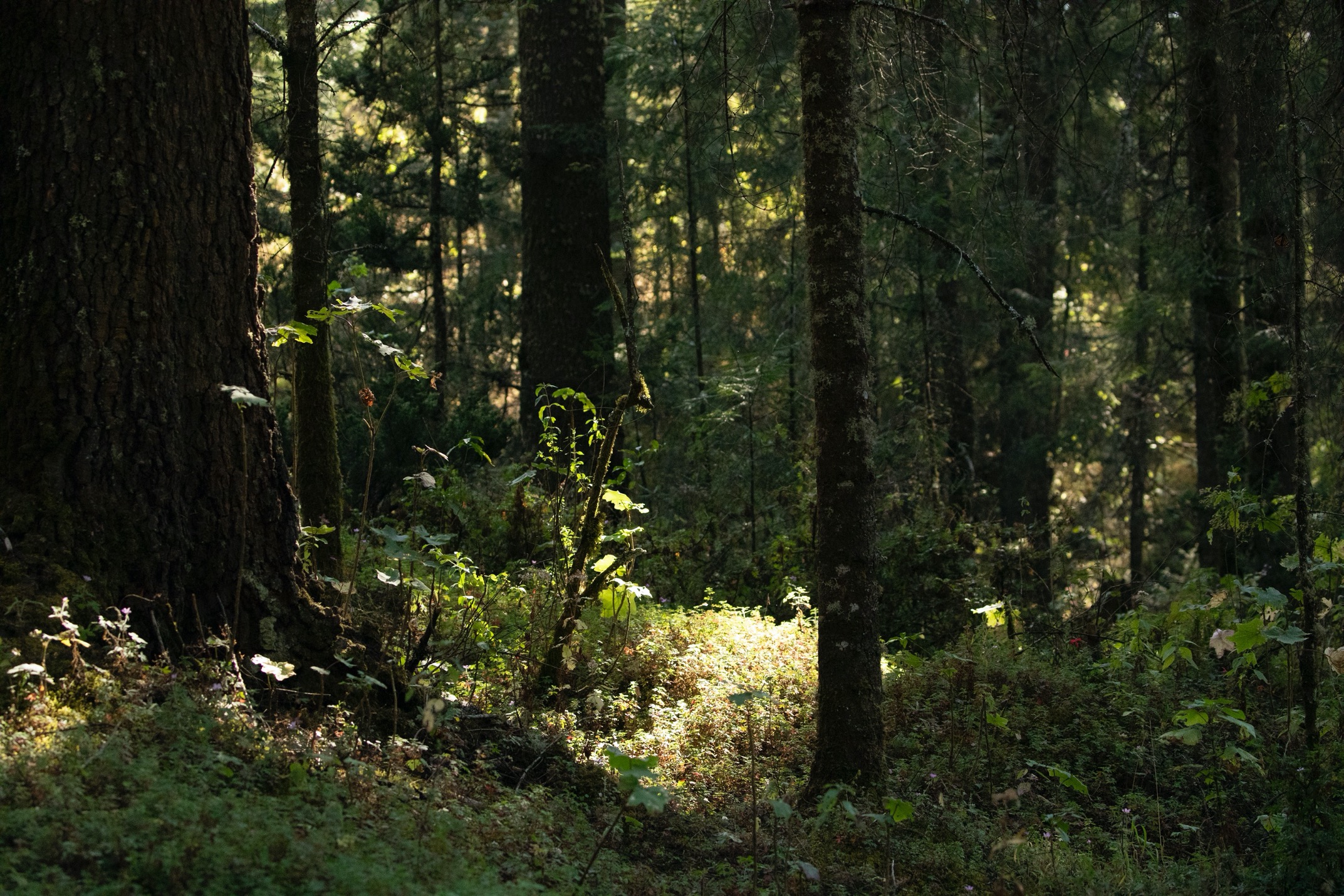
Finally, the forest itself is just stunning. Saying that photography is “all about light” is a bit of a cliche. However, it is absolutely true and training your eyes to see unique, beautiful light is a key skill to develop in your photography.
In particular, knowing how to expose bright light properly can yield extraordinary photos of the, well, ordinary. Here, a small patch of bright light cuts through the trees like a knife. By underexposing my shot significantly, I properly exposure for the swath of bright light. That bright beam is not washed out or overly bright, but instead acts as a subject of my photo and allows the colors, tones, and contrasts of the forest to come to life all around it.
As I continue to go through my photos from this trip I’m amazed that each and every time I visit these monarch kingdoms I come away with different photos of the same phenomenon. It just goes to show you that the journey of photography, even for someone returning to the same place for nearly 20 years, can yield new views, new visions, new creativity, and new passion for some of nature’s greatest spectacles.
I hope to see you in the monarch forests one of these years…
Cheers, and all the best,

Court
Leave a reply